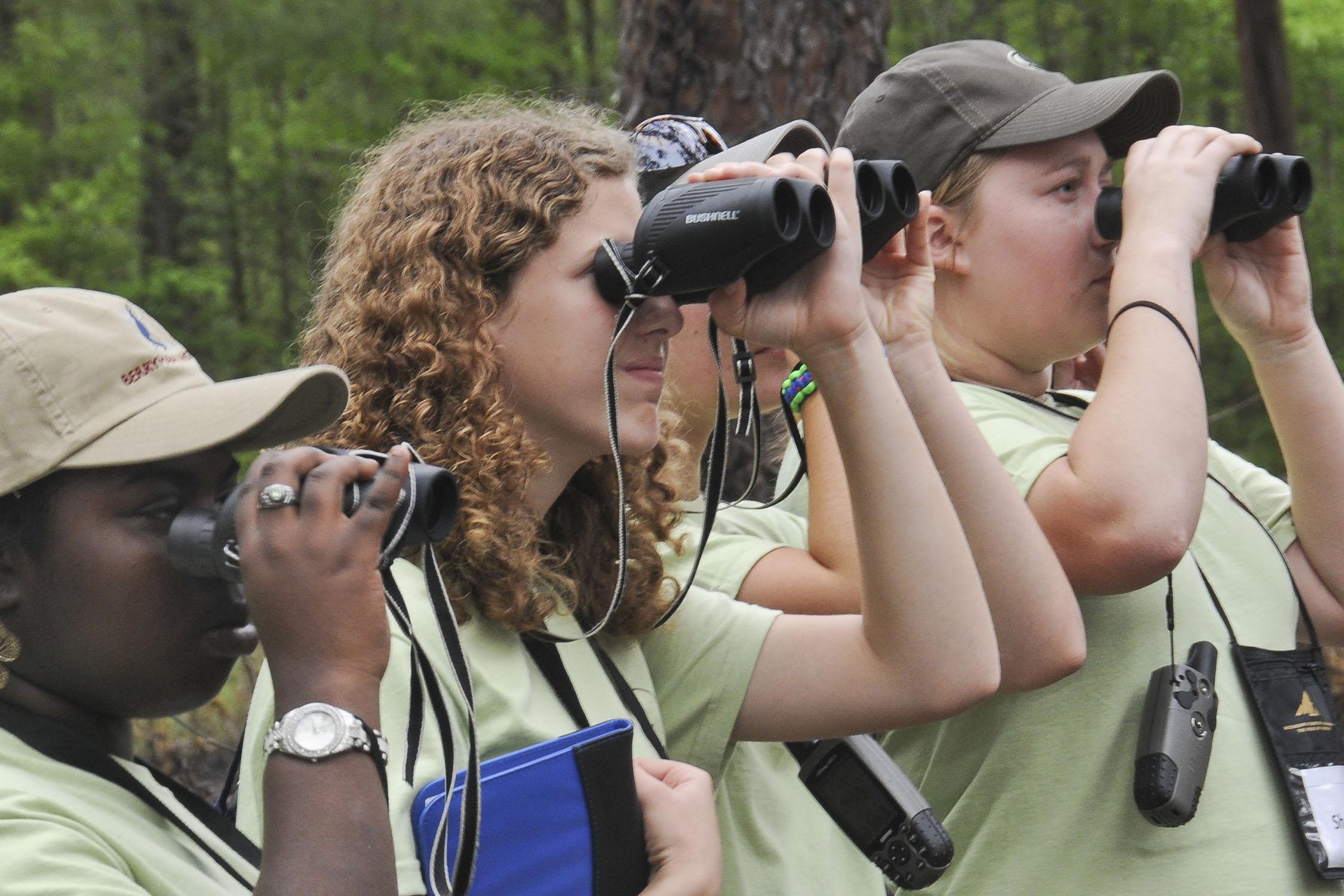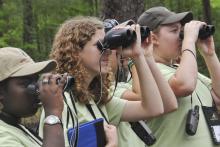Information Possibly Outdated
The information presented on this page was originally released on May 9, 2014. It may not be outdated, but please search our site for more current information. If you plan to quote or reference this information in a publication, please check with the Extension specialist or author before proceeding.
Setting your sights on birding basics
MISSISSIPPI STATE -- Spring is the time to get outside and enjoy soft, warm breezes and glorious sunshine before summer’s heat forces us to seek shelter indoors. One way to connect with nature and awaken your winter-weary soul is getting to know your feathered neighbors.
Bird-watching, often called “birding,” is growing in popularity. A 2011 U.S. Fish and Wildlife Service survey reported nearly 47 million people spent more than 5 million days watching birds around their homes and elsewhere. Wildlife-watching, including birding, resulted in $55 billion in expenditures in 2011. That’s a lot of sales tax fueling our economy!
Birding is popular because it is not hard to get started. All you need are a decent pair of binoculars and a field guide or online reference tool that will help you identify birds in your region.
Birds are usually active during the day, so they are not difficult to find. You can start in your neighborhood and branch out as you gain confidence and opportunities. New places and new habitats mean new birds for you to find.
Looking through the pages of a bird field guide can feel overwhelming. There are more than 700 species of birds breeding in the U.S. How can you tell which one is outside your window, and how can you identify it before it flies away?
Birds look and behave the way they do because it helps them survive. These physical and behavioral traits aid them in getting a mate, finding and eating food and avoiding death from weather or predators. Biologists use the characteristics of shape, size, color patterns and behavior to put birds into groups that make study easier. You can use these same clues to identify birds.
First, quickly assess its shape or silhouette. This will help you place it into one of the major categories used by biologists, birders, and field guides. For example, does your mystery bird have the long neck, bill and legs of a heron-like wading bird?
Maybe it has a powerful, curved beak and athletic build of a predatory bird, such as a hawk or eagle.
Or is it small and dainty with delicate beak and legs? If so, it is likely a perching bird.
After you assess the general shape, estimate its size. This can be tricky, so birders often compare the size of a new bird to one they already know. For example, is your mystery bird similar in size to a sparrow, a crow or a goose?
Also note details about the size or length of its beak, legs and tail. Some birds, such as swallows and purple martins, have legs that are very short compared to their height. These birds spend a lot of time flying, so they don’t need long, strong legs. Other birds have bills one to two times longer than the width of their head. These species, like shorebirds or hummingbirds, often use their long bills to reach food that is hidden deep in flowers or under the water or mud.
Next, look at the overall color pattern of the bird. Notice the location of light and dark places or regions of spots, streaks or other patterns. Are there stripes on the head or spots on the belly? If the bird is colorful, where is the color? Is it only in patches on the wings, or does it cover the head and back?
Finally, the behavior of a bird is also helpful in identifying it. Determine if its posture is straight up and down or horizontal to the branch. Does it flap continuously, or does it soar when it flies? Does it hop or walk on the ground, or does it climb up a tree trunk? If it is swimming on water, does it dive completely out of sight, or does it bob upside-down with its backside up in the air?
With answers to questions like these, you should be able to narrow the list of possible species to just a few. Then use habitat, geographic region and time of year to shorten the list even further.
Different species of birds may share similar traits and geography but live in different habitats. For example, both a wood thrush and a brown thrasher have reddish-brown backs and dark spots or streaks on their chests. They are similar in size, and they are often on the ground. But a wood thrush lives in large forests with big trees, and a brown thrasher likes brushy places like hedgerows.
Also, remember that many birds migrate during spring and fall. If your reference material says the bird is only present in the winter, and you think you are seeing it in the spring, chances are you need to keep searching until you match appearance, habitat, region and time of year.
Now you’re ready to put on comfortable shoes, pick up some binoculars and head outside to enjoy the birds of spring. With patience and practice, you will soon be birding like an expert.

Editor’s Note: Extension Outdoors is a column authored by several different experts in the Mississippi State University Extension Service.





